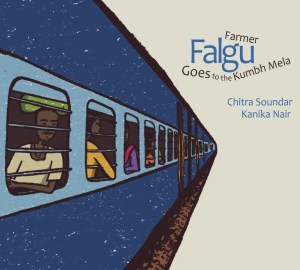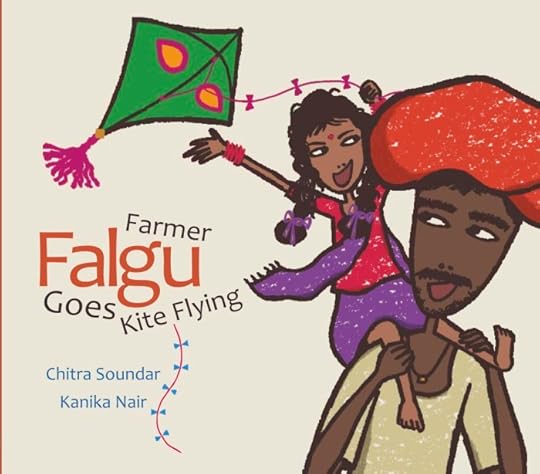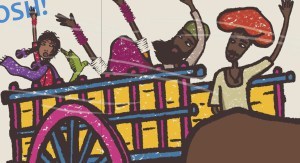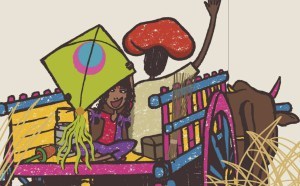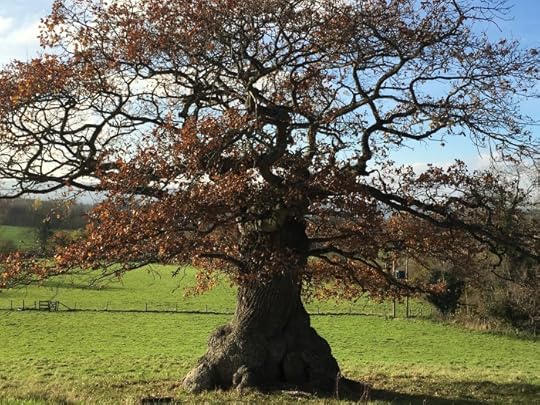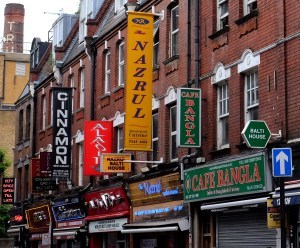Chitra Soundar's Blog, page 7
January 17, 2017
My #DiverseAThon 2017 TBR Pile
While I’m a blogger, I’m not a book blogger. I still read quite a few books a month – ranging from picture books, chapter books, MiddleGrade and if time permits some grownup fiction too. Kids books are far more imaginative, funny and hopeful than grownup fiction. Amongst the children’s fiction, I read all sorts of books – a majority being written by or about #POC and most often #ownvoices. So when the #DiverseAThon was announced, I thought I should participate.
Also this year’s #DiverseAThon is happening while I’m on holiday and therefore my list is a little longer than normally practical. Moreover, I’d be at the Jaipur Literature Festival for part of this time and I’m worried I’d be tempted to change my TBR, worse extend the list, leaving me very little time to wash, eat or sleep. So if you find me disoriented and completely incoherent (fine, more than normal), it’s not just because of the inauguration. Although I’d rather live in the world of my books than today’s alternate reality.
So without further ado, here is my TBR.
First I’ll start with picture books.
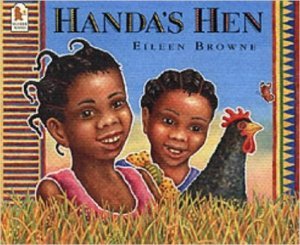 Handa’s Hen by Eileen Brown, Published by Walker Books
Handa’s Hen by Eileen Brown, Published by Walker Books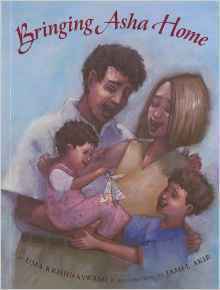 Bringing Asha Home by Uma Krishnaswami , Jamel Akib Published by Lee & Low Books
Bringing Asha Home by Uma Krishnaswami , Jamel Akib Published by Lee & Low Books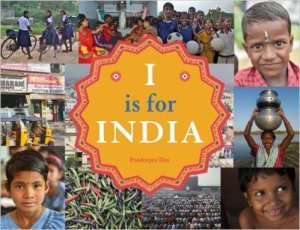 I is for India by Prodeepta Das Published by Frances Lincoln Books
I is for India by Prodeepta Das Published by Frances Lincoln Books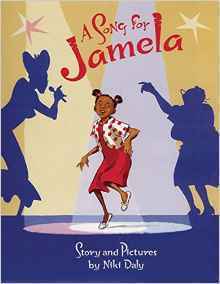 A Song for Jamela by Niki Daly Published by Frances Lincoln Books
A Song for Jamela by Niki Daly Published by Frances Lincoln Books Happy Birthday Jamela by Niki Daly Published by Frances Lincoln Books
Happy Birthday Jamela by Niki Daly Published by Frances Lincoln Books
Then here are the novels I’ll be reading.
 Takeshita Demons: Monster Matsuri written by Cristy Burne , Ilustrated by Siku Published by Frances Lincoln Books
Takeshita Demons: Monster Matsuri written by Cristy Burne , Ilustrated by Siku Published by Frances Lincoln Books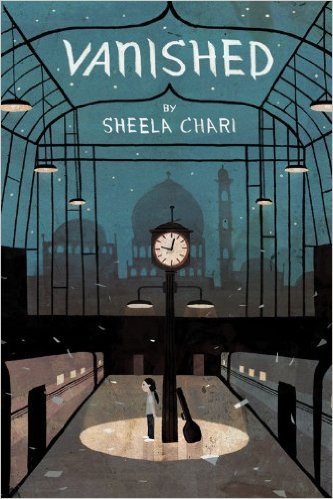 Vanished by Sheela Chari published by Hyperion Books
Vanished by Sheela Chari published by Hyperion Books A Beautiful Lie by Irfan Master published by Bloomsbury Children’s Books
A Beautiful Lie by Irfan Master published by Bloomsbury Children’s Books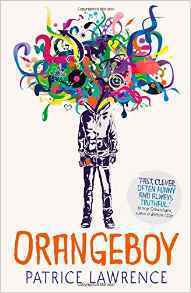 Orangeboy by Patrice Lawrence Published by Hodder Books
Orangeboy by Patrice Lawrence Published by Hodder Books
January 3, 2017
It’s becoming a habit!
Having a double book launch ought to be a once-in-a-decade kinda thing. But it happened in October 2016 and it is happening again in January 2017. And I wasn’t expecting it then and I was sure not expecting it to happen again.
Farmer Falgu Goes Kite Flying is out at the Jaipur Lit Festival on 20th January. Click here to find out more. Along with that, Karadi Tales, my publisher have confirmed that Book 4 in the Farmer Falgu series – Farmer Falgu Goes to the Kumbh Mela will also be released at the same time.
Kumbh Mela is a special occasion in the Hindu festive calendar. It occurs once in twelve years and thousands of people congregate in Allahabad for a holy dip in the confluence of three rivers. It is one of India’s an the world’s largest religious gatherings.
Farmer Falgu decides to visit this festival and of course typical of all his trips, this too is fraught with unexpected problems. There is one difference in this book though, the bullocks come with him only until the railway station. And then he takes the train to Allahabad – which is great because I love trains.
Check out a video about Kumbh Mela here. It is noisy, colourful and full of music and religious fervour. It is a congregation of peaceful humanity. Now why would Farmer Falgu encounter problems here? Well, you have to read to find out.
While Farmer Falgu Goes Kite Flying has special connections to Rajasthan and Jaipur, Farmer Falgu Goes to Kumbh Mela will have connections to Allahabad and its festivities.
Kanika Nair has created brilliant illustrations for both the titles. Her colourful yet minimalist style conveys the busy-ness of India without actually overwhelming the reader. I’m sure children everywhere are going to love these two stories full of colourful imagery from India.
The festival bookstore is run by Full Circle Books who will be stocking my other titles too. So if you are coming to the festival, you have a double treat in store. Both the titles will be available to buy and I’ll be signing your copies too.
December 31, 2016
Goodbye 2016!
It’s that time of the year again when everyone looks back at the departing year and introspects, ruminates, sighs.
2016 was one such year – where the world’s balance was shaken, politics everywhere has been less about the people they serve, natural disasters occurring more often and some bright lights switched off.
2016 for me personally was a mixed bag as well – but I should say if I don’t count the collective disappointment of Brexit and the US elections, and if I just focussed on the inner nucleus of my writing, it has been a good year. 2016 has been a culmination of hard work from many years and some of those have paid off.
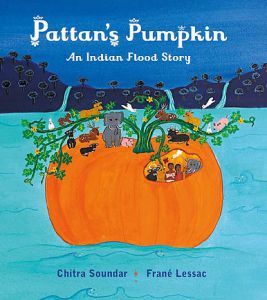 My first picture book came out in the UK – Pattan’s Pumpkin (illustrated by Frané Lessac and published by OtterBarry Books) and that definitely gave me a place in the space, a small seat at the table, even though Farmer Falgu has been a roaring success worldwide. And then of course Farmer Falgu himself has decided to fly to the UK with Red Robin Books, which is amazing. Three picture books in the UK certainly gave me some elbow space at the table.
My first picture book came out in the UK – Pattan’s Pumpkin (illustrated by Frané Lessac and published by OtterBarry Books) and that definitely gave me a place in the space, a small seat at the table, even though Farmer Falgu has been a roaring success worldwide. And then of course Farmer Falgu himself has decided to fly to the UK with Red Robin Books, which is amazing. Three picture books in the UK certainly gave me some elbow space at the table.
My second title in the Prince Veera series came out with Walker Books – A Jar of Pickles and a Pinch of Justice. And it rekindled interest in the first title too – A Dollop of Ghee and a Pot of Wisdom.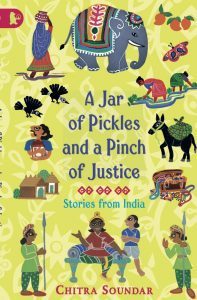
I got mentioned in a few diverse books list, did a novel length amount of blogging and officially become a Picture Book Den-er. I used to have my nose pressed against the Picture Book Den window and I’ve now been invited in. How cool!
I was at many amazing events this year – as usual the SCBWI conference was a highlight, but more important to that, I proved myself as an accomplished liar at the SCBWI anniversary party. I reconnected with SAS and went to Folly Farm and of course also joined Picture Book Den.
At my MA, we celebrated a summer of events with Vermont MFA students and I made some lasting friends, stood in a queue next to David Almond and listened to some great writers read and speak about their stories. I should mention that a few months after the summer celebrations, recently, in December, I had a one to one session with David Almond (yes, have you fainted?) and he was so inspiring and encouraging. He in fact wanted to read more of the story he had reviewed and it was uplifting.
A bunch of us, from the MA and SCBWI and non-SCBWI friends attended a seminar by John Yorke. What I hadn’t expected was that I would pitch a screenplay on stage on behalf of five of us who worked on an assignment and get commended by the judges and by John Yorke. Small things like these keep me going in search of whatever is the pot of gold at the end of that rainbow.
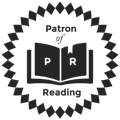 As an author, I was proud to be asked to be Patron of Reading by West Earlham Junior in Norwich. My first trip to Norwich was fabulous, the children so enthusiastic about reading and a wonderful team of teachers, literacy coordinators and believe it or not, a school librarian for real too. Over this year, I’ve visited schools in London, Lincoln, Norwich, Liverpool, Wiltshire and Somerset and performed in festivals in Linton and Medway.
As an author, I was proud to be asked to be Patron of Reading by West Earlham Junior in Norwich. My first trip to Norwich was fabulous, the children so enthusiastic about reading and a wonderful team of teachers, literacy coordinators and believe it or not, a school librarian for real too. Over this year, I’ve visited schools in London, Lincoln, Norwich, Liverpool, Wiltshire and Somerset and performed in festivals in Linton and Medway.
On a personal note, I set aside my shyness and went to a Bollywood dance class., moved to a Wiltshire town to spend half the week writing and playing house like a grown-up when there is no evidence of me ever turning into one. I’ve been watching and photographing birds around where I live, going on walks in the countryside and generally filling the well in my soul.
I’m thankful to so many friends and all of my family for being there, for booksellers, librarians and teachers who invited me to their schools and children who were kind enough to read my books and tell me about them too. I’ve been blessed with wonderful parents who take joy and pride in my success even if it is as small as placing my first poem in an anthology (Yay!) or releasing two new titles in the UK in their presence. My sister and her brood and my brother-in-law have been enormously supportive and I cherish my time and love of my little nephews who draw with me, play with me, listen to my stories, make up new stories and demonstrate car-crashes almost causing bodily harm.
I don’t know what 2017 will bring. It’s starting with a bang with appearances at the Jaipur Lit Festival, two new book launches and a family wedding. It has the promise of more joy – more festival appearances, more WBD visits and more stories to write. I wonder if I would get comfortable driving a car again next year, see the world around where I live, have a sleepover with my nephews at the new place, transition from part-time writing to full-time writing, perhaps even unagented to agented? Who knows? That’s what makes it exciting – the not knowing, the struggle, the unexpected success and the cycle of it.
I wish you all a wonderful 2017 and I hope your dreams come true and you get both what you want and what you need. Read widely, share a lot, smile more and I’m sure we would have chased 2016 back to where it came from. Let’s welcome 2017 with open hearts and warm hugs.
December 23, 2016
Farmer Falgu Goes Kite Flying – The Inside Story
If you’re familiar with the Farmer Falgu series (published by Karadi Tales) that I write and Kanika Nair illustrates, you will notice that Farmer Falgu is always going somewhere.
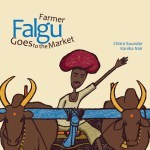
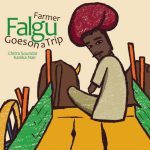 It wasn’t planned – it just happened that way. And now, given my mild obsession with patterns, I always send him off somewhere.
It wasn’t planned – it just happened that way. And now, given my mild obsession with patterns, I always send him off somewhere.
I have a childhood reputation of “going somewhere” all the time. And even now as a grown-up people think I’m always on wheels. But in reality, I’m a homebody. I love staying at home and doing stuff, cooking snacks, reading a book. If I can help it, I won’t leave my cave for days. My alter-ego Farmer Falgu adds to the myth of my “wandering spirits”.
The trouble is Farmer Falgu’s trips are filled with surprises, some nice and some not so nice. But Farmer Falgu never loses his cool – he resolves them the best he can.
Keeping up with tradition, this time for the third book in the series, Farmer Falgu would be going somewhere too. This time too, not so far. But intensely exciting. He’s taking his daughter Eila to the kite festival.
In Rajasthan and in many parts of northern India, kite festivals are part of the Sankaranthi celebrations. The colourful kites adorn the winter sky adding more colour to the celebrations.
When Kanika made Farmer Falgu a Rajasthani farmer, I wanted to do a book that was unique to the land he was from. The book is full of Farmer Falgu’s charm – he takes his friends and Eila is having loads of fun despite the troubles.
Eila seems to be following in her father’s footsteps in helping and sharing and I like her for that. When Eila is devastated, Farmer Falgu of course has to save the day. He is her dad and we want dads to chase the monsters and bring order to the world. And that’s what Farmer Falgu does. And all’s well in Eila’s world.
Want to find out more? Want to listen to the story? Come to Jaipur Literature Festival and buy the book! It’s a free event. So drop in. And on your way back you can always fly a kite.
December 9, 2016
Crumpets and Pickles Wrapped in Magic
I grew up on crumpets and ginger-beer.
No, my mum is not a Bakeoff fan. In fact, we don’t even have an oven in my home in India. As a kid, I read so many books with unfamiliar foods in them that my vocabulary broadened even if my taste buds had never experimented with them.
Even though I grew up in a city that has the second longest urban beach in the world, the beaches, coves and mystery islands I was reading in the books were exotic and exciting.
Now as a writer, I live in the UK. Here crumpets are available in supermarkets and the beaches are cold most of the year but for a brief period of glorious summer.
And I often think the hot Indian weather, the spicy food and the bullock carts would kindle the imaginations of children here, perhaps give them a sense of adventure about the world out there – which is different and yet the same.
And that’s what I want my stories to do. A Jar of Pickles and a Pinch of Justice, brings a whiff of the Indian summer, the caw-caw of the crows, the mango pickles and trumpeting grey elephants. Along with all that, it also poses questions to young readers about right and wrong, fair and unfair decisions.
Like all young people that have a sense of justice that is unwavering and strong, Prince Veera and his friend Suku too feel strongly about doing the right thing. And in each story, they have to sift through the facts, go deeper than the surface and the come up with a fair solution to the problem in front of them.
But it’s not all work and no play. They have a lot of fun playing pranks, running in the fields and eating corn. Their friendship and camaraderie is infectious and sometimes even the grownups join in.
As a writer, I hope these stories bring the magic of faraway places to children who do not live in India and for those who are familiar with India and its colours, smells and festivals, I hope these are affirming and recognisable.
As a child books from faraway places opened up my imagination, gave me a sense of wonder about the worlds I didn’t know about – for all it mattered an English countryside could have been on another planet, for me they were so exotic and magical.
That’s exactly what I want to do when I write stories – bring a bit of magic wrapped along with a story to every reader who stretch their boundaries and read a book about something or someone different from them.
 Read A Jar of Pickles and a Pinch of Justice and find out if that magic reached you and lit your imagination.
Read A Jar of Pickles and a Pinch of Justice and find out if that magic reached you and lit your imagination.
November 18, 2016
I Write Like I Cook
My first cooking lesson perhaps started when I was six, because I hung around my grandmother, sitting on the kitchen counter, listening to her tell stories from her past, smelling the foods she was making. She taught me how to cook without tasting – just with the smells.
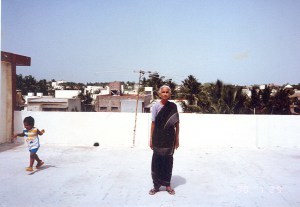
When I was ten, I really had to cook. A full family meal. I learnt from my Mum who stood outside the kitchen giving me instructions as I nervously mixed and stirred and listening to the number of times the pressure cooker hissed. My mum and my her mother-in-law, my grandmother, didn’t measure any of the spices. Everything was intuitive – a pinch or a handful or just the right quantity. There was no recipe to follow. Nothing was written down. All the cooking was passed down by practice. If I hadn’t spent time in the kitchen arguing over whether the salt went first or the spices, I would have never learnt.
Until I was in my teens, I knew only the regional cuisine I was brought up on. In India every time you crossed a 100 KM you crossed a cuisine line. I grew up in the state of Tamil Nadu, but Tamil Nadu itself has tens of cuisines, all regional, and many passed down from 2000 years ago.
When my interest in cooking got stronger, I started experimenting with other Indian cuisines. I tried Gujarati food from the west, Punjabi food from the north, Kerala food from the south-west, street food from Mumbai. All vegetarian, and all adapted. I don’t think I ever cooked anything that I didn’t change a bit here and there. Even to my mum’s recipe. In fact, some family recipes have been irrevocably changed and my dad thinks it’s for the good.
As I left the country in late 20s, and moved to Singapore, I remained an Indian foodie. I still experimented – but only with Indian food. 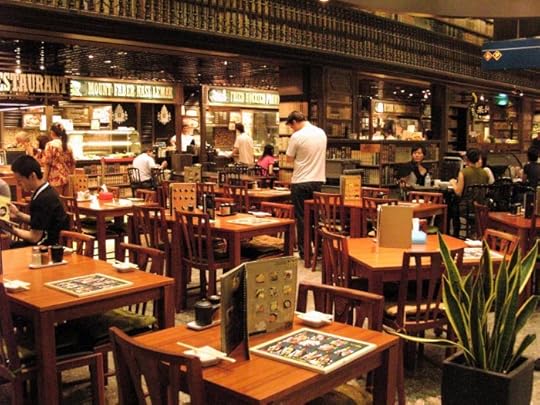 The vast array of food courts in Singapore didn’t tempt me one bit – primarily because they did not fathom how anyone could be vegetarian for 7 days a week, 365 days a year and definitely on the extra day in a leap year too.
The vast array of food courts in Singapore didn’t tempt me one bit – primarily because they did not fathom how anyone could be vegetarian for 7 days a week, 365 days a year and definitely on the extra day in a leap year too.
But I did venture slowly into international food – not necessarily always authentic, but an adventure nevertheless. I started travelling to the west around this time and had to quickly find alternatives to Indian food that didn’t contain egg or fish or meat of any kind. Italian, Greek and some Mexican if you knew the difference between con and san.
Moving to the UK 11 years ago, introduced me to the vast array of supermarket shelves. I walked around the aisles (I still do this in mega big food stores), looking at strange names – Paprika, Sun-dried tomato paste, Rosemary, Thyme, Pesto, Udon noodles and such.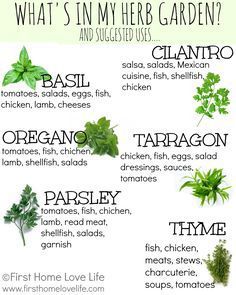
I not only learnt to appreciate world cuisine, I wanted to experiment, learn and cook things I liked. My philosophy about food is – learn to cook what you love to eat. That way I never have to wait for someone to cook, or find a restaurant.
Experimenting with new spices from Europe and South America taught me new flavours, new smells, new combinations. I cooked a lot of Mexican food – like vegetarian chili, burritos, tacos. I cooked Italian. I love pasta more than pizza for some reason. And some British food – especially crumbles and pies.
For a while I kept my two interests separate – I cooked Indian food the Indian way and the world cuisine as per downloaded recipes. Then slowly I started mixing and matching. The more confident I got with the spices, the more I experimented.
I started taking traditional Indian recipes and adding western ingredients into it. And voila! These turned out to be my signature dishes. Those that my mum and my sister want the recipes for. Although it still frustrates my sister when I say – just a pinch of this and a trickle of that.
Then I took the western dishes I loved – especially the pasta and started adding Indian ingredients into it. My brother-in-law freaked out. He politely asked me to cook Indian the next time he visited – because he is an authentic foodie and my mixing up food cultures troubled him and kept him awake at night. I’m getting hungry thinking about so much food.
But the point is, I’ve recently realized that my writing has also taken a similar journey and the parallels were obvious when I looked.
When I had started out writing, of course I wrote as per the rules. I didn’t change anything, I didn’t modify anything. Not just from a craft point of view, but also from content – edicts like if you’re a girl, these are the kind of things you wrote about. What was not allowed, I wrote in diaries. I sometimes regret that I destroyed all my diaries before I left India – they contained raw emotions, anger, passion, sorrow, frustration and so much truth. Perhaps as a grown-up I would cringe at my teenage diaries. But nevertheless they would have been more authentic than the stuff I showed others.
I don’t think I ever thought I’d write for publication until I left India. I sent in poems and essays to competitions and magazines.
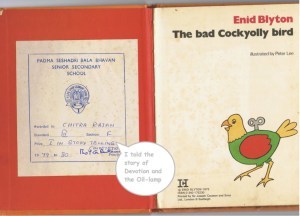 The kernel of a writer was there. I wanted others to read my stuff. I secretly left my writing where people could see them. I loved it when I won prizes and things got accepted. But never in a million years, a lower middle-class girl could aspire to focus on writing and not a career.
The kernel of a writer was there. I wanted others to read my stuff. I secretly left my writing where people could see them. I loved it when I won prizes and things got accepted. But never in a million years, a lower middle-class girl could aspire to focus on writing and not a career.
The next stage of my writing started when I reached Singapore. I started writing down my stories on paper. By now the Internet had reached the html stages and I could Ask Jeeves! (remember that?). This was the time when Yahoo was still god and Google hadn’t been born yet.
I read lots and lots of books – craft books and fiction. I wrote every day. I sent out stuff every week. Many returned, one or two found their place. At this time, I wasn’t sure what type of writer I was – as much as I didn’t know what food I loved other than Indian. I wrote business articles that were published in the national newspaper. I wrote inspirational essays; I wrote short story and the first one was published in the Singapore Airlines magazine. I was experimenting in the kitchen and in my notebook.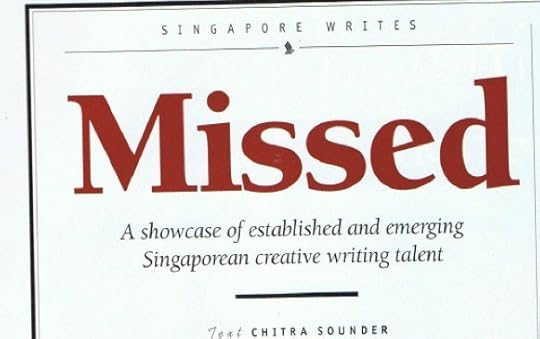
When I settled on children’s writing, I knew why. My imagination was too bizarre and weird for grownups. I wanted wishing chairs, my own faraway tree and witches and goblins and magic. I settled down into writing children’s fiction the same time I settled into my Indian cooking. I had experimented, I had figured it out and I was happy where I was.
When I came to the UK, it was a completely different ball game. I bumped into serious talent and I quickly realized I had to up my game. But it took a long time to understand how.
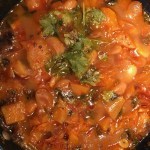

As with my cooking, and experimentation with western cuisines, I realized there was a perception that I had to figure out. Indian food had to be a certain thing – curry. People thought they knew what authentic curry was and they didn’t want an Indian telling them how it should be. It was the same in the stories I wrote. I was told what I should be writing or what was authentic. And when I experimented with western cuisine, and western plots, stories, characters, that didn’t go down well either.
Like in my cooking, I realised my authentic experience was not in the popular experience. I wasn’t sure if I had to write only Indian stories that matched the accepted norm, would I be “exploiting” my heritage just to get published. It was like cooking “curry” for a dinner party instead of cooking my authentic south Indian food. I had to connect to India in every story.
Because for many gatekeepers, my “western” stories were like being invited to an Indian home and being served fish and chips. They had come expecting Sag Aloo and Naans.
I switched gears very slowly. Many writing workshops later, many retreats, lectures, random courses, tens of SCBWI events later, I was figuring myself out. This was not just a writer’s journey. I had to figure out my identity – I had become a British citizen but I wasn’t born here. I had to deal with the conflict of my identity as a person and as a writer.
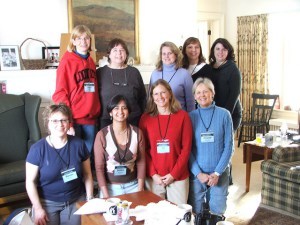
Less than half a decade ago, the recipe started to take shape. I could smell the spices, I could figure out the pinch and the trickle. I did exactly the same in the kitchen and in my writing – I blended my experiences in. I’m different and I am one. I’m a contradiction and I’m ambiguous.
Like the brinjal fry (brinjal is aubergine, just in case you were wondering), I made with my mum’s recipe modified with sun-dried tomato paste, I mixed the ingredients in the writing. I started figuring out how I could bring an authentic story to a western audience. I think I’m still figuring it out. Like how I still go to explore spice shelves in supermarkets, to find the ingredient that I could add to my mother’s spice box, I’m constantly learning how to blend my experience growing up in India with my world citizenship.
Sometimes the spice combinations don’t work. Sometimes they blow my taste buds and it becomes a classic recipe. Same way, some stories just work. Some struggle and stay inside my notebooks.
As I said, I cook the same way I write. I’m richer for the new spices I’ve learnt to use. I’m one person with multiple experiences. What’s authentic to me would never be authentic to my next-door neighbour in India who grew up right next to me. We had similar experiences and different ones. Who is to say which one is more authentic?
There is no single story to humanity. All our stories are universal and unique at the same time.
So next time you visit me, ask for some authentic Indian food and don’t gasp when you don’t see the curry takeaway staples on it. As for the stories, I can only hope I stay true to my characters and spin a good yarn. Like with food, the writer or the cook is only part of the experience. They have to be completed by a reader or a guest. Come and have a taste. You might be pleasantly surprised.
October 10, 2016
A Celebration of Jars and Pumpkins
Throw a giant pumpkin, a jar of mango pickles and a storyteller together into a bookshop, sprinkle some cake, mix some friends and family, garnish with praise from the publisher and editor and what you get is one amazing book launch and a chuffed author who is busy writing more stories.
Maybe you missed the noisy chatter on Twitter or my invite in the newsletter or perhaps you had  reloca
reloca ted to Mars to escape the pollution on Earth -but if you have not heard, I celebrated the launch of two new books last Saturday (8th Oct 2016) at Pickled Pepper Books, London with storytelling, orange and yellow mini cupcakes and a room full of people who had come from far to celebrate with me.
ted to Mars to escape the pollution on Earth -but if you have not heard, I celebrated the launch of two new books last Saturday (8th Oct 2016) at Pickled Pepper Books, London with storytelling, orange and yellow mini cupcakes and a room full of people who had come from far to celebrate with me.
I’ve gone to many book launches in the past few years and I was worried that I  wouldn’t know what to do when it was my turn. I was worried there won’t be any photos. I was worried that I’ll forget my words during the storytelling. I was worried. It was like your baby being sent to nursery or the big school for the first day. Shiny and new into the hands of others. Would they love the stories as much as I do?
wouldn’t know what to do when it was my turn. I was worried there won’t be any photos. I was worried that I’ll forget my words during the storytelling. I was worried. It was like your baby being sent to nursery or the big school for the first day. Shiny and new into the hands of others. Would they love the stories as much as I do?
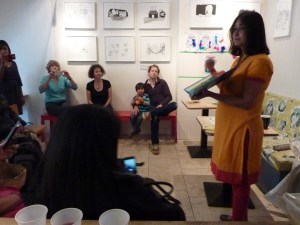 I watched the door as people trickled in. I watched as people on the street walked past and it wasn’t a familiar face. As friends started coming in, I slowly relaxed. As the time came to tell the stories, my story genie took over. She knew the stories, she loved them, she grew up with them. And I hope those who were there liked the stories.
I watched the door as people trickled in. I watched as people on the street walked past and it wasn’t a familiar face. As friends started coming in, I slowly relaxed. As the time came to tell the stories, my story genie took over. She knew the stories, she loved them, she grew up with them. And I hope those who were there liked the stories.
So the books have left the docks and floated away into the hands of readers. A story lives again when it is told and it grows and changes and lives over and over again when retold many times. And I hope these stories live those many lives through the readers and the listeners they read to.
September 16, 2016
An Interview with Frané Lessac – Illustrator of Pattan’s Pumpkin
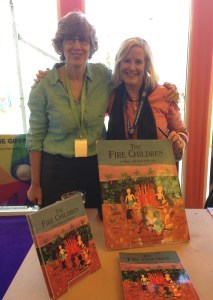 Frané Lessac with Janetta Otter-Barry at Edinburgh Book Festival just before she was commissioned.
Frané Lessac with Janetta Otter-Barry at Edinburgh Book Festival just before she was commissioned.Pattan’s Pumpkin was published in the UK, Australia and NZ on 1st September 2016. It was conceived as a book in 2013.
The book waited over two years for the perfect illustrator. It waited for Frané Lessac.
Frané is an award winning American artist who has exhibited her paintings in London, Paris, New York and Los Angeles. From film school in California she went on to live on the Caribbean island of Montserrat where she began her career as an author and painter. She loves to travel and create books based on her journeys. Frané has published more than forty children’s books and has won many international awards including the Muriel Barwell Award for Distinguished Service to Children’s Literature. She joined the National Year of Reading initiative as a State Ambassador in 2012 and a Room to Read Ambassador in 2014. She currently lives in Fremantle, Australia.
Janetta Otter-Barry, our publisher extraordinaire, was looking for the perfect illustrator who could bring the pumpkin to life. Click here if you haven’t read about how Pattan’s Pumpkin came to be. Unlike other picture books where the illustrator goes away for a few months and the comes back with a Ta-Da, Frané gave us a little peek at various stages and discussed key cultural aspects throughout the creation of the art. So I thought I should interview Frané Lessac for my blog (and hers) to find out more about her process and how Pattan’s Pumpkin came to be.
Here are my questions and Frané’s answers with show and tell of illustrations!
Pattan’s story is from southern India. Have you visited this part of India before? What kind of research did you have to do for the landscape and the animals?
I’ve travelled several times throughout India including the south coast of Kerala, but I’ve never visited the Western Ghats mountain ranges. It’s now at the top of my list. To research the flora, fauna and landscape, I looked at rare books and online resources.
Pattan is from a tribe indigenous to the Western Ghats mountain ranges. What kind of information did you need to know before you start drawing him and Kanni?
I researched the Irular people from southern India, who regard themselves as descendants of Pattan and Kanni. Their story that has been passed down from generation to generation and Chitra captured the complete essence of the story. Her retelling was a visual feast for my imagination. Creating a picture book is always a collaboration and with the “team”, editor, art director, Chitra and myself, we communicated throughout about our main characters. We needed to ensure we had overall cultural authenticity.
I like your little secret message of the ants and the two white birds in each spread. Do you decide on these little details early on or does it happen as you start drawing.
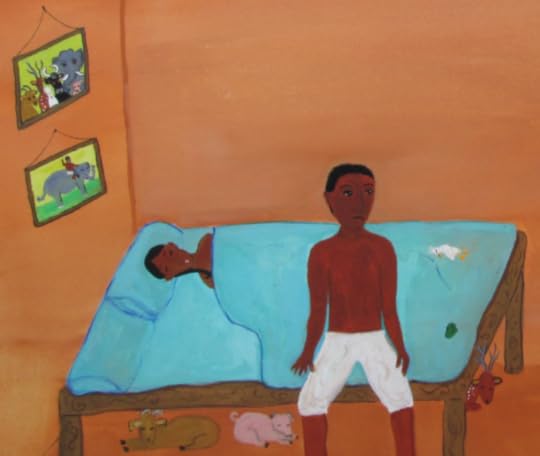
I add little details in my painting at the very end. When I was a child, I loved books with lots of details to explore and being able to discover new bits on each returned reading. I got a kick out of painting the bird and the frog asleep on Pattan and Kanni’s bed and all the other animals fast asleep under the bed. The portraits on the wall are funny too.
Can you show us a sample of your roughs and your step by step process?
The first step was to create thumbnails of every scene with sometimes 2-3 ideas for each one. The team decided which was their favourite. 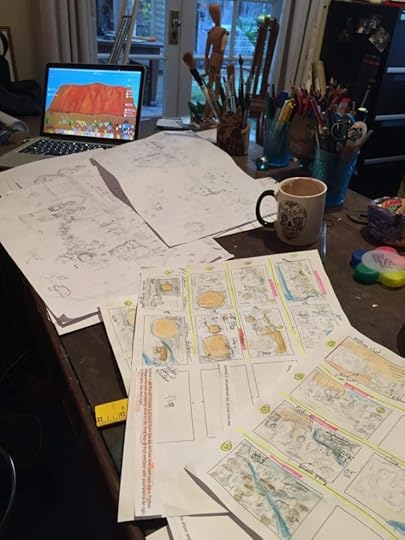
 Next, I sketched up sloppy copies, also known as preliminary drawings, to size and made a dummy book. The team went over the drawings and we tweaked further.
Next, I sketched up sloppy copies, also known as preliminary drawings, to size and made a dummy book. The team went over the drawings and we tweaked further.
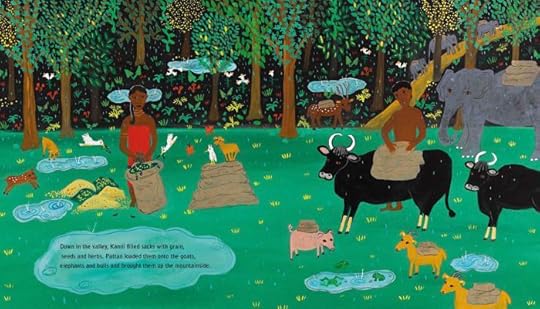
The palette to create the final art, was inspired by the many colours of India. I also used opposite colours side by side which made the art stand out. I then rendered each scene using gouache paint, taking up to 3 days to complete each one.
Do you love pumpkins? Was it different for you to visualise pumpkins in a non-Halloween scenario?
I love pumpkins and have the best pumpkin soup recipe and make a mean pumpkin pie! Growing up in the United States, the only pumpkins I knew were orange. We’d carve the biggest one we could find every Halloween. It wasn’t until I moved to the Caribbean that I discovered that orange ones weren’t readily found in the rest of the world.
When I wrote the story of Pattan’s Pumpkin, and learnt about how the region of Western Ghats is protected as a UNESCO heritage site, it got me thinking how Pattan’s message about conservation is an important one. What did you take away from Pattan’s Pumpkin? Did Pattan tell you a secret?
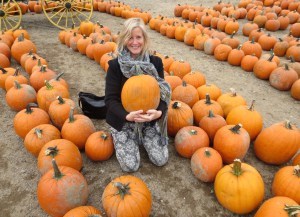 Frané dreaming about a crop of pumpkins…
Frané dreaming about a crop of pumpkins…Pattan’s secret message to me was to plant pumpkins. Lots of them. My garden will soon be taken over by hundreds of pumpkins. I want to grow one as BIG as the one in the story! Wish me luck.
Thank you Frané – we enjoyed seeing the work in progress, and amazed that each rendering took three days to complete. Wow! Pattan and Kanni would love the book for sure. You should share your pumpkin pie recipe with us sometime. Find out all about Pattan’s Pumpkin here.
September 13, 2016
Happy Birthday Mr Dahl
Yesterday was Roald Dahl’s 100th birth anniversary. His estate is celebrating it worldwide with movies, jars with hedgehogs and such and hopefully more reading too.
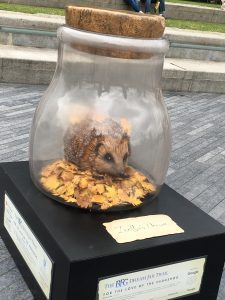
I came to Dahl’s books much later in life after I moved to England in 2006 – and I wish I had known about his books when I was growing up. I grew up with Enid Blyton’s books. The Magic Faraway tree made me imagine and inspired my first made up oral story. But in many ways they were still not as subversive as Dahl’s books. I wish I could have read the wacky and crazy anti-establishment books like The Twits or Matilda or Fantastic Mr Fox or even The Enormous Crocodile.
As a kid I flew under the radar mostly, unnoticed and invisible, except for a few verbal outbursts and once in a while doing some unexpected things that I must admit my mum let me do and my dad never knew about. Before you go imagining anything wild like crawling under the neighbour’s fence (we had a wall) or exploring ancient caves (we lived in a city), it wasn’t anything like that.

At 6 I switched my choice of 2nd language at school. We had to study at least two Indian languages in school – one main and one like an elective but at Y1. I went into my Y1 class for the first day and switched my languages to opposite of what was filled in my admission form. I wrote a radio song at 8; wrote poems and essays and went on stage along with our neighbours until we were 15. We didn’t know it was anything unusual.
Apart from these approved extra curricular all I did was read and follow rules. I didn’t want to break rules or crockery if I can manage it although I was thin as a blade of grass and clumsy like a clown. Who knew in the future I would be fat and go to clown classes.
But I was a serious kid – worried about orphans in the SOS village, wrote passionate (but bad) poetry, raised money for my mum’s charity, gathered friends to publish a neighbourhood newspaper and didn’t get jokes that people made about me all the time. My coping mechanism was reading and writing. What I read expanded my imagination. I dreamt up elaborate situations in my head and had an entirely new family in my head (Ssh! My real family doesn’t know still). I was shy, easily intimidated and in awe of style and fashion and girls who could be confident. I am still like that – I just have learnt how to hide it better.
So the Enid Blyton books and Nancy Drew stories were all about following rules anyway and my stories were like that – should I say – are like that. I wrote quiet and serious stories and even if I have managed to put some funny bits, my stories are not yet wild and absurd. When I met Andy Stanton a few years ago to join the course he was going to teach at Faber – that’s what I told him – I want to learn to let loose – make my stories jump out of bins and tins, sing loudly at traffic lights and hop around the tube station with a mask. He just smiled. Perhaps he wondered if that could ever be taught or learnt. But he was immensely supportive during the course.
When I read amazingly absurd stories I wonder – would reading Dahl as a kid have helped? I think it would have. It would have made me a different person in the head and in real life too. Since 2006, I have managed to read all of Dahl mostly including his short stories and biography and I wish I could have immersed in his world as a kid. Today with my nephew I am getting the reputation of CRAZY AUNT – he is a serious 4 year old who asks me not to be silly when I dance like a clown and make faces. I am going to put Dahl into his hands as soon as he can read on his own and get him to soak up the crazy wacky subversive world. Life is too serious for us to take it seriously. I’ve changed over the years; I know I can be whatever I want to be. But I wish I could have known that when I was 6 or 7 or 8.
I’ve changed since writing for children and still changing. Every children’s book I read, opens up my imagination and shows me more possibilities and I forget I’m a grownup. I still read children’s books for pleasure and I would rather be inside the pages of a funny Roald Dahl than look up and see President Trump (or our PM for that matter) on the telly. Sometimes I wonder what he would happen if we let some of Dahl’s characters loose on him. That’d make a great movie.
Anyway, Happy Birthday Mr Dahl. Your books are needed for every child to take refuge in, forget whatever the dire situation they are in and revel in the anarchy. Thank you to everyone who edited and published the books, to Quentin Blake who gave us the pictures. I’m off to find a crazy villain for my own stories.
August 31, 2016
Welcome to Pattan’s Pumpkin Blog Tour
Today we are celebrating the publication day for Pattan’s Pumpkin! A journey that took three years and nine months. I’m proud to be an author in the stables of Otter-Barry Books and in partnership with the fabulous Frané Lessac.
Just like Pattan does in this story, I’m going to take you on a rollicking ride with me over the Internet to tell you more about Pattan and his amazing pumpkin. Over the next few weeks we will be talking about the Western Ghats – a UNESCO heritage site, conservation, ancient stories passed down from one generation to another and the history of surakka (the humble bottle gourd) and amazing pumpkins growing in this world.
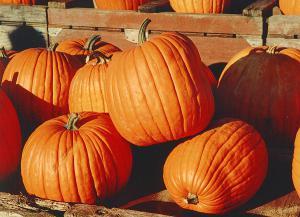
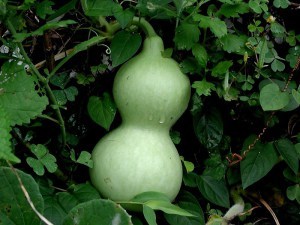
I’ll be talking about the inspiration to this book, the importance of telling this story and the message I hope children will take away from reading this tale. We will have an interview with the illustrator Frané Lessac, a confession about my stationery habits and of course some pumpkin recipes straight from the land of Pattan.
And if that’s all not enough, you will be soon invited to the book launch in October and I’ll be telling Pattan’s story to you all. We will have colouring pages, craft stuff to do and even take away recipe cards. If you are interested in attending the book launch and want to be included in the invite, fill in the form below and I’ll drop you an invite by email.
Librarians, teachers and literacy coordinators – you can get your hands on posters, activity sheets, lesson plans and bookmarks too. So if you’d like to receive a pack please do fill in the form below and tell me if you want me to post them or if you would collect them at the launch.
So without further ado here is a leaflet about the book.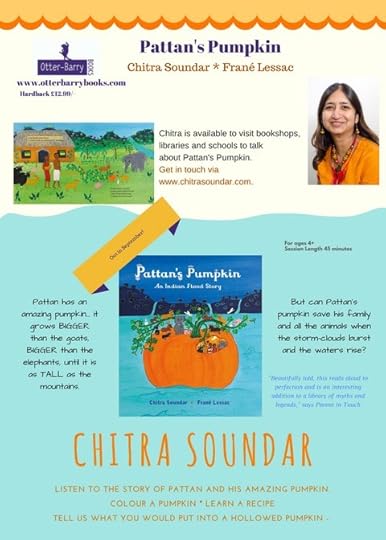
The book is available from all good bookshops across the UK. If you are coming to an event, I’d be happy to sign your copy too.
So what are you waiting for? Sign up and climb aboard Pattan’s Pumpkin!
[contact-form]


